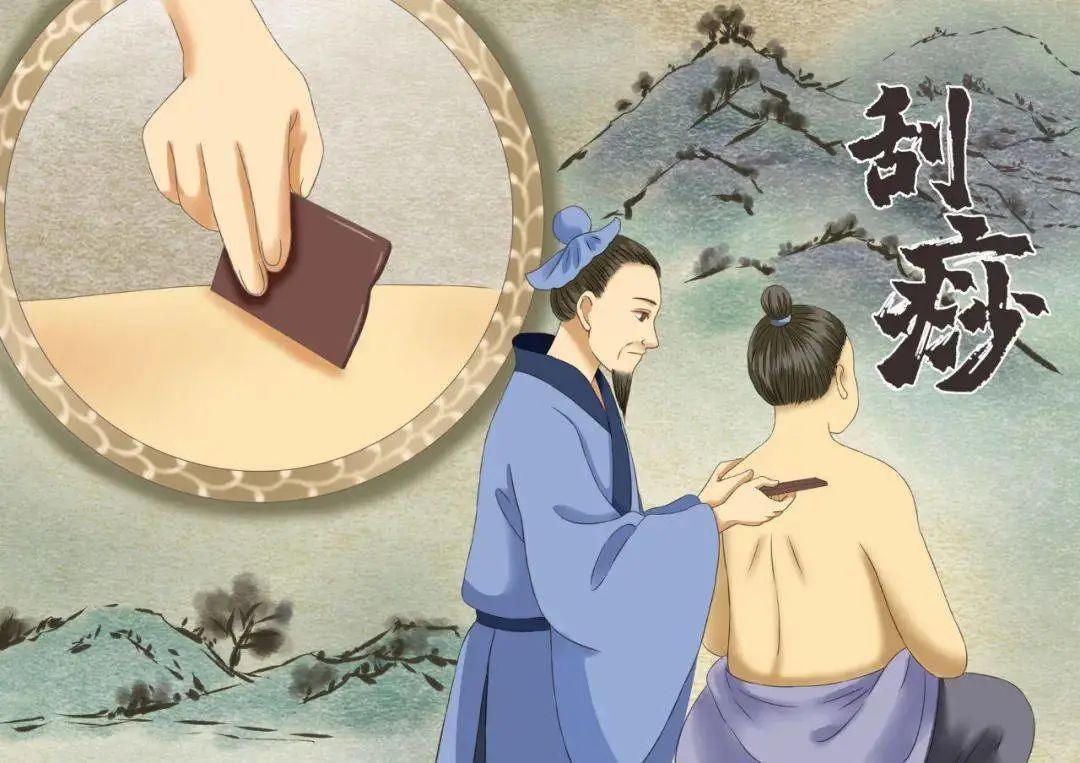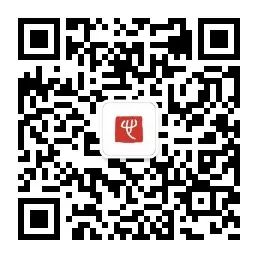
Introduction to Gua Sha

Gua Sha is based on Traditional Chinese Medicine (TCM) theory, using materials such as ox horn or jade to scrape the skin in relevant areas to achieve the purpose of unblocking the meridians.
Gua Sha is a simple operation and is one of the traditional natural therapies in China. However, Gua Sha therapy is not without contraindications; it is not recommended for patients with a weak constitution, i.e., those with deficiency syndromes.
History of Gua Sha

Gua Sha is a convenient and effective method of treatment. The term “Sha” evolved from “sand,” referring to a type of pathological condition. The earliest mention of this term can be found in the Song Dynasty in Zhang Gao’s “Medical Treatise.” In the Yuan Dynasty, physician Wei Yilin wrote in 1337 in “Effective Methods of Medicine” about three methods for treating “Sha syndrome”:
01
For patients with small bleeding points or small congested spots on the forehead and chest, paper or lampwick is dipped in a small amount of fragrant oil, ignited, and then the flame is directly applied to the Sha points until it extinguishes with a sound. This is known as the “Cui Sha method” in later generations.
02
For persistent abdominal pain, bloodletting can be performed at the fingertips. For heavy and painful legs, bloodletting can be done at the Weizhong (委中) point. This is referred to as the “Fang Sha method,” also known as bloodletting therapy.
03
Using ramie fiber balls dipped in water, scraping is performed on areas such as the neck, elbows, and wrists until subcutaneous bleeding forms red spots resembling grains of rice. Then, by covering with clothing for warmth and consuming congee, soup, or tea to induce sweating, the Sha toxins are expelled. This is what is now known as the “Gua Sha method.”
Thus, the meaning of “Sha” has two aspects:
One refers to the internal pathological response of the body, known as “Sha Xiang” (Sha manifestation),
The other refers to the “Sha” that appears on the surface of the body after Gua Sha stimulation, known as “Sha Hen” (Sha marks).
Today, when we refer to “Sha,” we usually mean the Sha marks that appear after Gua Sha stimulation. Many conditions result in red, purplish-red, or dark blue spots resembling sand on the skin surface after scraping, leading to the therapy being called Gua Sha therapy.
Gua Sha helps expel Sha toxins, which are pathological products from the body, thereby achieving the goal of curing Sha syndrome.
Gua Sha Technique

The practitioner generally holds the Gua Sha tool in the right hand, with an angle of approximately 45° between the tool and the skin. The practitioner should use their arm and wrist strength flexibly, applying even and moderate pressure, starting lightly and gradually increasing the intensity, ensuring the pressure penetrates to the deeper tissues. Gua Sha should be performed in one direction without back-and-forth scraping, aiming for the appearance of slight purplish or dark spots.
Scraping direction: Typically from top to bottom, from inside to outside, and from left to right. The head is scraped from top to bottom or horizontally from inside to outside; the shoulder blades are scraped horizontally from inside to outside; the back, waist, and abdomen are scraped from top to bottom and from inside to outside; the face and chest are scraped diagonally from inside to outside.
Indications for Gua Sha

01
Heat stroke, colds, and external febrile conditions;
02
Nausea, vomiting, and food stagnation;
03
Headaches, dizziness, insomnia, neuroses, gastroenteritis, constipation, diarrhea, hypertension, etc.;
04
Various soft tissue pains, rheumatic arthritis, and joint pain;
Gua Sha therapy can be used for individuals with sufficient Zheng Qi (正气) to unblock the meridians, suitable for exterior syndromes and excess syndromes.
Contraindications for Gua Sha

01
Patients with acute infectious diseases, severe heart disease, hypertension, stroke, critical illnesses, renal failure, liver cirrhosis with ascites, or severe systemic edema;
02
Patients who have just eaten or are hungry, as well as those who fear Gua Sha;
03
Patients with leukemia, hemophilia, hemorrhagic purpura, and other bleeding or coagulation disorders;
04
Pregnant women, those who are overly fatigued, elderly patients with chronic illnesses, and extremely weak individuals should avoid Gua Sha therapy;
05
Scraping is prohibited on sensitive areas such as the eyes, ears, nostrils, tongue, lips, and areas like the nipples, front and back of the genitals, and the navel (Shenque point);
06
Scraping is prohibited on highly allergic skin, scarred skin, skin diseases (such as broken skin, burns, ulcers, carbuncles, and abscesses), fresh or unhealed wounds, and areas of bone fractures;
07
Heavy scraping is prohibited on areas with visible large blood vessels;
08
Women should use Gua Sha with caution during menstruation.
Patients with deficiencies in Qi, blood, Yin, or Yang should use Gua Sha therapy cautiously. In particular, it is important to control the area, intensity, and duration of Gua Sha to avoid causing fatigue, weakness, or dizziness in the patient.
Precautions for Gua Sha

01
After Gua Sha, the skin may experience mild pain, itching, or a slight burning sensation for 1-2 days, which is normal and requires no special treatment. The recipient should protect the scraped skin, wearing soft, loose cotton clothing to avoid friction that could cause injury and infection;
02
The duration of Gua Sha is about 20 minutes or as tolerated by the patient;
03
It is best to drink a cup of warm water, ginger juice, or lightly salted sugar water after Gua Sha; for severe Sha, “Ten Drops Water” or “Huo Xiang Zheng Qi Water” can be added to warm water. Rest for 15-20 minutes after Gua Sha. Avoid cold showers within 4 hours after Gua Sha;
04
After Gua Sha, the recipient should maintain a regular lifestyle and a light diet, avoiding raw, cold, and greasy foods in the near term.

Peaceful and Harmonious, Guarding Data for Treatment
Sharing our own insights into Traditional Chinese Medicine!

